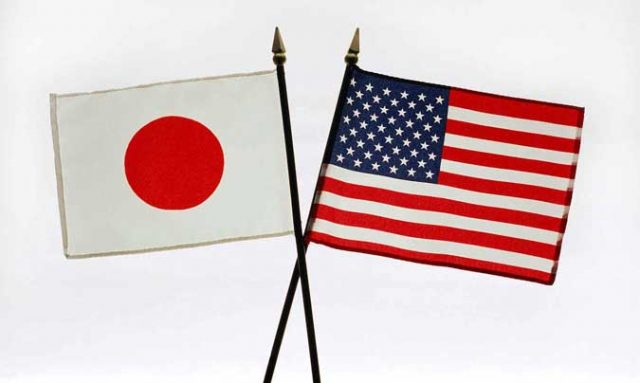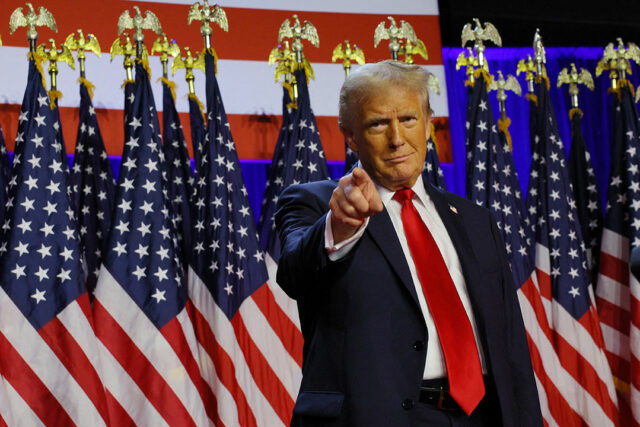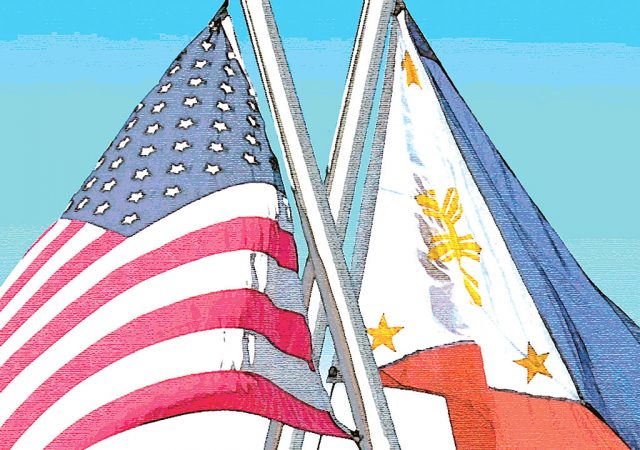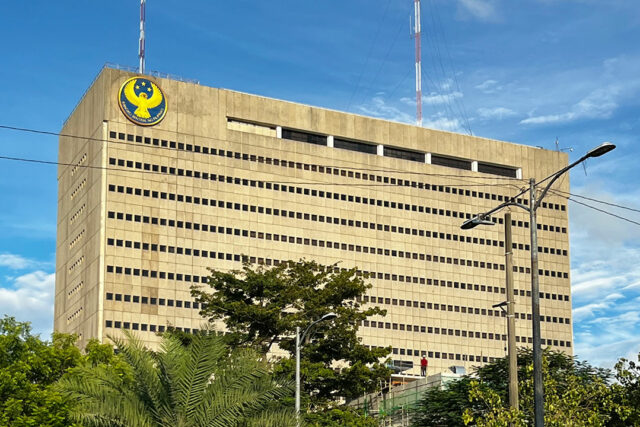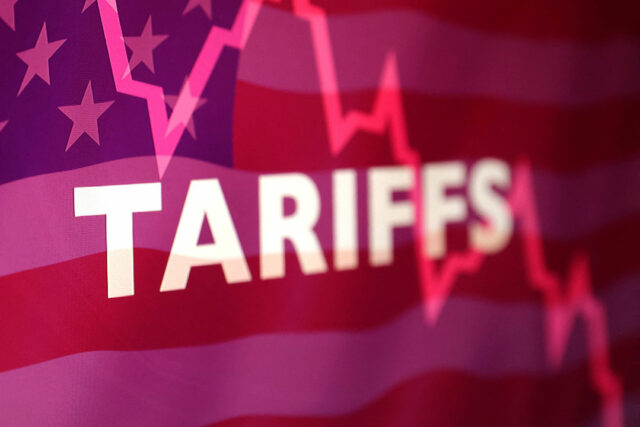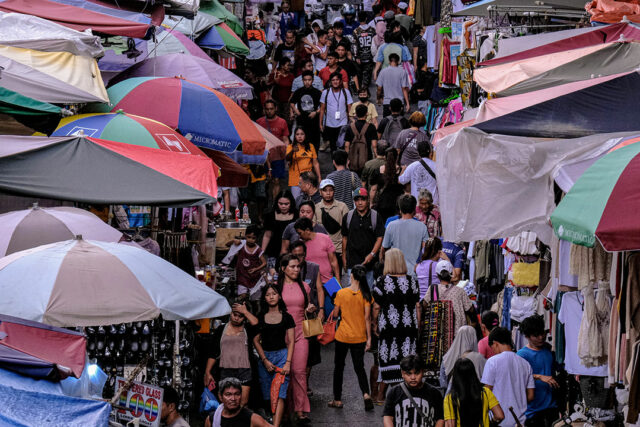By Luisa Maria Jacinta C. Jocson, Senior Reporter
THE BANGKO SENTRAL ng Pilipinas (BSP) cut borrowing costs by 25 basis points (bps) on Thursday and signaled further easing amid a “more challenging external environment.”
The Monetary Board on Thursday reduced the target reverse repurchase rate by 25 bps to 5.5% from 5.75%. All 17 economists in a BusinessWorld poll last week predicted a 25-bp cut.
Rates on the overnight deposit and lending facilities were also lowered to 5% and 6%, respectively.
“The Monetary Board noted the more challenging external environment, which would dampen global gross domestic product (GDP) growth and pose a downside risk to domestic economic activity,” BSP Governor Eli M. Remolona, Jr. said.
“On balance, the more manageable inflation outlook and the risks to growth allow for a shift toward a more accommodative monetary policy stance,” he added.
Mr. Remolona noted the risks to the inflation outlook have also eased and remained “broadly balanced” until 2027.
The central bank slashed its risk-adjusted inflation forecasts to 2.3% in 2025 from 3.5% previously; and to 3.3% in 2026 from 3.7% previously. It also now expects inflation to average 3.2% in 2027.
“Like the rest of the world, we’re looking at slower growth, but unlike the rest of the world, we’re looking at lower inflation,” Mr. Remolona said.
“The rest of the world is looking at higher inflation. The lower inflation rates that we’re looking at give us more degrees of freedom,” he added.
Latest data from the local statistics authority showed inflation slowed to 1.8% in March from 2.1% in February, its slowest rate in nearly five years.
This brought average inflation to 2.2% in the first quarter, well within the central bank’s 2-4% target.
“Upside pressures come from possible increases in transport charges, meat prices, and utility rates,” Mr. Remolona said.
On the other hand, downside risks could come from “continuing effects of lower tariffs on rice imports and the expected impact of weaker global demand.”
US TARIFFS
Mr. Remolona said the US’ new tariff announcement had already been factored into its policy decision.
US President Donald J. Trump on Wednesday announced a 90-day suspension on the steep new reciprocal tariffs on most of its trading partners. However, the baseline rate of 10% is still in effect.
The Philippines was slapped with a 17% tariff rate on its exports to the US.
“We have looked at global models. The advantage of the announcement of the reciprocal tariffs is we now have numbers to feed into the analysis. That’s a big thing.”
“It clears up a lot of the uncertainty. Of course, there’s a 90-day suspension of these tariffs, and the tariffs themselves could change. So, there’s still some uncertainty, but there’s less of it than before,” he added.
The central bank is anticipating slower growth, both global and domestic, due to these tariffs.
“Normally, when you have less trade, that’s a negative for growth. Globally, it’s a negative for growth… The new policies, I think, will tend to restrict trade. And that will also tend to slow down growth. Some countries, of course, will be affected more than others.”
Economic managers are targeting 6-8% GDP growth this year, after GDP expanded by 5.6% in 2024.
First-quarter GDP is scheduled to be released on May 8.
“One channel that we are looking at is the expected slowdown in global growth that could affect also domestic economic activity,” BSP Assistant Governor Zeno R. Abenoja said.
He said this latest rate cut could help support economic activity. “There are some downside risks, but we think that there are some reasons to continue to see some firmness in economic activity moving forward.”
“We were looking at growth near the low end of the (growth target). That could still be a scenario moving forward, depending on how the external environment progresses from now on,” Mr. Abenoja added.
‘BABY STEPS’
The BSP chief said they will likely continue cutting rates further this year.
“We contemplate further cuts this year. We can’t tell you exactly how many more cuts, but definitely (there will be) further cuts this year,” Mr. Remolona said.
“We’ll still do it in baby steps. We’ll still do it 25 bps at a time. But I can’t tell you how many more times.”
There are four more Monetary Board policy meetings this year, with the next slated for June 19.
Although they are still in an easing mode, Mr. Remolona noted rate cuts are unlikely to be delivered at every meeting.
“For now, what we’re looking at is a few more cuts, but we have more meetings than the number of cuts we are thinking about,” he added.
He said the current rate is still “slightly restrictive.”
“We’re still somewhat below capacity, which means we have some room to cut without causing inflation ourselves… so somewhat restrictive still.”
This cycle of easing will also likely conclude this year, Mr. Remolona said.
“For now, we think we will have completed the easing cycle in 2025. A possible risk is that we begin to see a hard landing, and then we’ll have to cut by more than 2025. But 2027 is still too far away.”
The central bank will continue to take a “measured approach” on any further monetary easing, he added.
Analysts likewise expect the BSP to continue its easing path this year.
“With inflation set to remain under control, we think the central bank will loosen policy further over the coming months and by a bit more than most analysts expect,” Capital Economics Assistant Economist Joe Maher said in a commentary.
“We expect a combination of easing food price inflation and lower transport price inflation to keep inflation contained over the coming months.”
For his part, Mr. Maher said they expect a total of 75 bps worth of rate cuts for the entire 2025.
Nicholas Antonio T. Mapa, chief economist at Metropolitan Bank & Trust Co., said “soft inflation and fallout from Trump’s tariff tantrums could mean BSP continues easing cycle through 2025.”
Pantheon Macroeconomics Chief Emerging Asia Economist Miguel Chanco said they expect the key rate to end at 4.75% this year.
“We remain content, as well, with our below-consensus terminal benchmark rate forecast of 4.75%, which implies three more cuts in the months ahead, one more than what the consensus sees,” he said.
Mr. Chanco said they recently cut its 2025 growth forecast to 5.3% from 5.4%, “in the wake of the US’ decision to levy a blanket 10% tariff against all imports, including those from the Philippines.”

